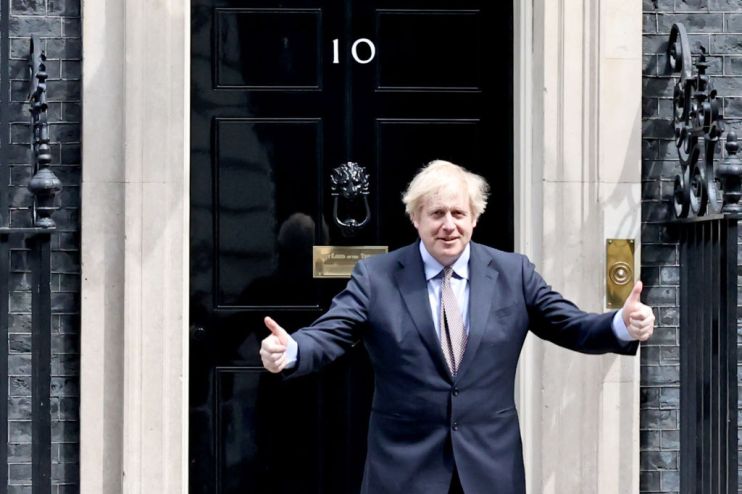Coronavirus lockdown: Boris Johnson tells millions to get back to work

Thousands of workplaces across England have been told to open up from tomorrow and people will be able to spend more time outside from Wednesday, after Boris Johnson outlined the government’s three-stage roadmap for easing the coronavirus lockdown.
The Prime Minister said during a pre-recorded address tonight that “anyone who can’t work from home” such as manufacturing and construction workers “should be actively encouraged to go to work”.
However, he also told people to avoid public transport where possible “because we must and will maintain social distancing, and capacity will therefore be limited”.
The Prime Minister also announced that from Wednesday, people in England will be able to sit in parks, beaches and outdoor areas as long as they keep a two-metre distance from other people.
It will also be possible to drive to other destinations and play sports in public spaces with members of your household.
There will no longer be a limit to how many times a day someone can exercise, with individual sports such as golf and fishing now allowed.
There will be increased fines for those who break the new coronavirus lockdown rules.
Coronavirus lockdown ‘road map’
Johnson said the lockdown would be eased through two further stages.
Stage two includes a “phased reopening of shops” and primary schools and will happen no sooner than 1 June.
Stage three will be from 1 July at the earliest and will see the government “re-open at least some of the hospitality industry and other public places, provided they are safe and enforce social distancing”.
It is understood that this could include outdoor dining areas, with pubs potentially shut for longer.
A part of the government’s road map to easing the lockdown will also be to force people entering the UK from overseas into quarantine for 14 days.
Johnson said the government would be “driven by the science, the data and public health” when deciding to move to different stages of the lockdown.
“We will be monitoring the R and the number of new infections, and the progress we are making, and if we as a nation begin to fulfil the conditions I have set out, then in the next few weeks and months we may be able to go further,” he said.
“I must stress again that all of this is conditional, it all depends on a series of big ‘ifs’.
“It depends on all of us – the entire country – to follow the advice, to observe social distancing, and to keep that R down.”
‘Not the time’ to end lockdown
The government will hope the announcement eases fears of the impending economic damage caused by the coronavirus crisis.
The Office for Budget Responsibility (OBR) predicts GDP will plummet 35 per cent in the second quarter, while there has been 1.8m more Universal Credit claims and a further 6.3m people are being paid by the state through the furlough scheme.
However, Johnson said it was not the time to completely lift the social distancing restrictions, as some speculated he would earlier this week.
The UK’s official Covid-19 death toll hit 31,587 yesterday.
“This is not the time simply to end the lockdown this week,” he said.
“Instead we are taking the first careful steps to modify our measures. It would be madness now to throw away that achievement by allowing a second spike.
“We must stay alert. We must continue to control the virus and save lives.”
The government also unveiled a new slogan today to replace the government’s “stay at home, protect the NHS, save lives” message.
The new message is “stay alert, control the virus, save lives”.
A Number 10 spokesperson clarified what this meant, after the new slogan was criticised today for being too vague.
Scottish first minister Nicola Sturgeon, for instance, said: “I don’t know what stay alert means”.
A number 10 spokesperson said “stay alert” meant “staying at home as much as possible…working from home if you can…limiting contact with other people…keeping distance if you go out…washing your hands regularly”.
They added: “We can control the virus by keeping the rate of infection [R] and the number of infections down.
“This is how we can continue to save lives and livelihoods as we start to recover from Coronavirus.”